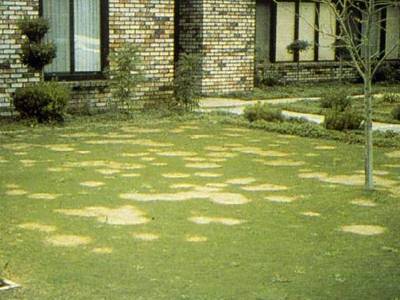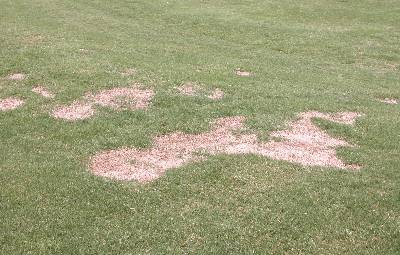Bermudagrass – Spring Dead Spot

Q: Our lawn is three years old and most likely infected with Spring Dead spot disease. We have bermudagrass sod in our front yard and have numerous brown spots which seem to be worsening now in late May.
We called a lawn company to come out and look at it and we were told that it is Spring dead spot disease. We raked up the dead spots and tried sprinkling some soil and sand over these areas. It has not helped at all. Neither has a fungicide spray. What can we do? Our yard looks awful.
A: Spring Dead Spot can make a lush bermudagrass lawn look awful in no time. The softball- to beachball-sized dead spots typically occur in May and early June. Infected areas recover slowly and weeds may invade these areas during the summer. The fungus infected your grass last year; it weakened the turf during the winter and finally expressed itself in the dead circles you’ve noticed.
Although fungicides can help, they are not the final answer in controlling this disease. In the future you should avoid excessive fertilization (three applications per year is plenty).
Do not apply nitrogen after late August. Raise your mowing height by one-half inch on Labor Day to give the grass plants more blade surface. Have your soil tested (call 1- 800 – ASKUGA1) and insure there is adequate potassium in the soil.
Reduce thatch by aerifying and then pulverizing the soil cores. The chemicals myclobutanil (Spectracide Immunox) or Bayleton can be applied this fall to help manage this disease. In the mean time, plant healthy bermudagrass plugs into the dead spots and let the grass grow to fill the dead area.
North Carolina State University has a very helpful reference for several diseases of turfgrass.
The American Phytopathological Society published anextremely detailed analysis of the disease.
















